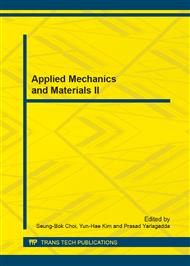p.777
p.784
p.788
p.793
p.797
p.803
p.809
p.813
p.817
Research on the Wind Tunnel Force Balance Tests of Long-Span Closed Coal Trestle
Abstract:
Structures with long span and high flexibility are very sensitive to the wind forces, so it is necessary to study on the wind effects on such structures. In this paper, based on section model wind tunnel high-frequency force balance tests, two horizontal base bending moments and shear forces of the typical supporting columns as well trestle bridge deck of the closed coal trestle under different wind directions were measured. The shape coefficients and their variations with the wind directions of the typical supporting columns as well trestle bridge deck were calculated then analyzed by the mean values of base forces. The experimental values of the shape coefficients were compared with those in the Chinese Load Code, the results shown that both were in good agreement, which verified the reliability of the test, which also illustrated that wind-resistant design of the coal trestle in accordance with the Code was reasonable. Based on analysis of the variances of base forces between overall model with and without surrounding buildings, influences of surroundings buildings were studied. Interference factors were proposed which provided the basis for the base forces checking and wind-resistant design of the long-span closed coal trestle structures.
Info:
Periodical:
Pages:
797-802
Citation:
Online since:
December 2013
Authors:
Price:
Сopyright:
© 2014 Trans Tech Publications Ltd. All Rights Reserved
Share:
Citation:


